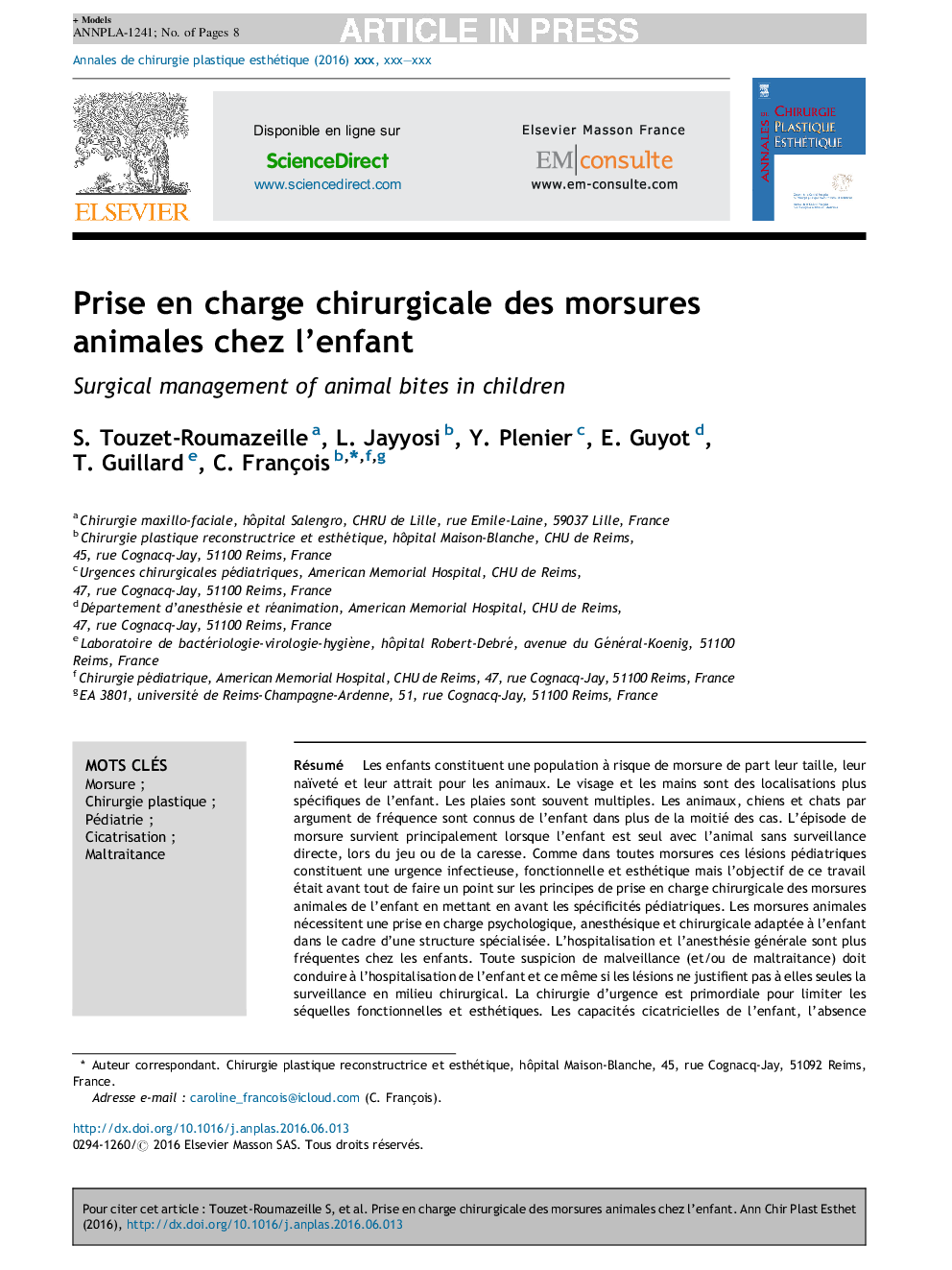| Article ID | Journal | Published Year | Pages | File Type |
|---|---|---|---|---|
| 5644598 | Annales de Chirurgie Plastique Esthétique | 2016 | 8 Pages |
Abstract
Children represent a population at risk, because of their short size, their naivety and their attraction to animals. The face and hands are the most specific locations in young children. Wounds are often multiple. In more than half the cases, the child knows the animal, which are dogs and cats by frequency argument. The bite episode occurs mostly when the child is alone with the pet without direct supervision, while playing or stroking the animal. As in all bites, pediatric lesions are infectious, functional and aesthetic emergencies, but the goal of this work was primarily to make a point on principles of surgical management of animal bites in children, highlighting pediatric specificities. Animal bites require psychological, anesthetic and surgical treatment, adapted to the child, in a specialized structure. Hospitalization and general anesthesia are more frequent in children. Any suspicion of mistreatment (and/or abuse) should lead to the child's hospitalization, even if wounds do not justify monitoring in a surgical environment. Emergency surgery is essential to limit functional and aesthetic consequences. The healing capacities of the child and the frequent lack of co-morbidity allow a conservative surgical treatment with suture, repositioning skin flaps and controlled healing in the first place. Immobilization, drainage, and antibiotics will complete the surgery. The healing process, however, leads to a specific management during scar remodeling phase and growth. Psychological care of the child and parents should not be forgotten, and has to start at the same time as surgical treatment at in acute phase.
Keywords
Related Topics
Health Sciences
Medicine and Dentistry
Dermatology
Authors
S. Touzet-Roumazeille, L. Jayyosi, Y. Plenier, E. Guyot, T. Guillard, C. François,
